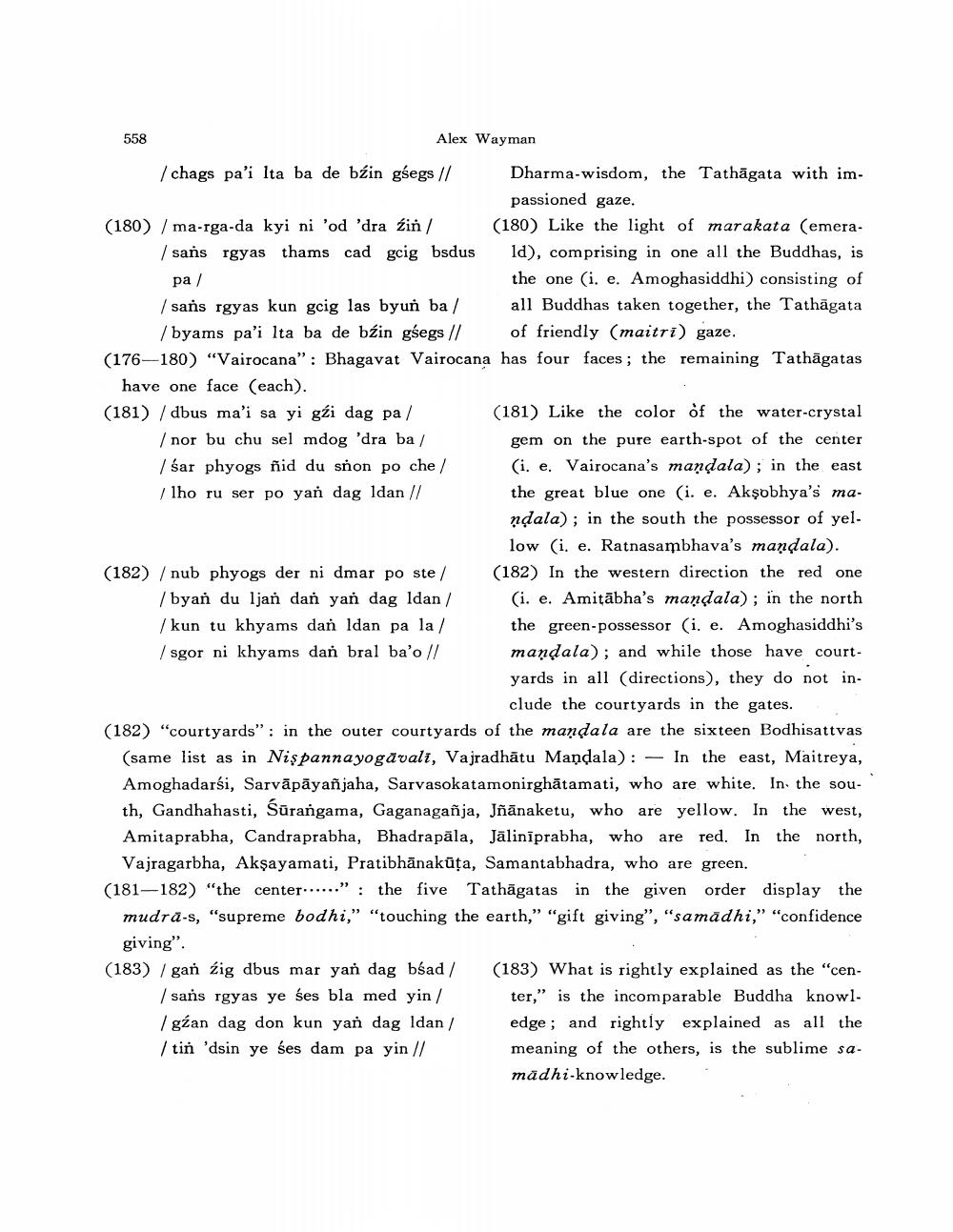________________ 558 Alex Wayman | chags pa'i lta ba de bzin gsegs // Dharma-wisdom, the Tathagata with im passioned gaze. (180) /ma-rga-da kyi ni 'od 'dra zin/ (180) Like the light of mar akata (emera. | sans rgyas thams cad gcig bsdus 1d), comprising in one all the Buddhas, is pa / the one (i. e. Amoghasiddhi) consisting of | sans rgyas kun gcig las byun ba / all Buddhas taken together, the Tathagata | byams pa'i lta ba de bzin gsegs // of friendly (maitri) gaze. (176--180) "Vairocana": Bhagavat Vairocana has four faces; the remaining Tathagatas have one face (each). (181) / dbus ma'i sa yi gai dag pa / (181) Like the color of the water-crystal | nor bu chu sel mdog 'dra ba / gem on the pure earth-spot of the center | sar phyogs nid du saon po che / (i. e. Vairocana's mandala); in the east | lho ru ser po yan dag ldan // the great blue one (i. e. Aksobhya's ma ndala); in the south the possessor of yel low (i. e. Ratnasambhava's mandala). (182) / nub phyogs der ni dmar po ste / (182) In the western direction the red one /byan du ljan dan yan dag ldan / (i. e. Amitabha's mandala); in the north | kun tu khyams dan Idan pa la / the green-possessor (i. e. Amoghasiddhi's | sgor ni khyams dan bral ba'o || mandala); and while those have court yards in all (directions), they do not in clude the courtyards in the gates. (182) "courtyards": in the outer courtyards of the mandala are the sixteen Bodhisattvas (same list as in Nispannayogavali, Vajradhatu Mandala): - In the east, Maitreya, Amoghadarsi, Sarvapayanjaha, Sarvasokatamonirghatamati, who are white. In the south, Gandhahasti, Surangama, Gaganaganja, Jnanaketu, who are yellow. In the west, Amitaprabha, Candraprabha, Bhadrapala, Jaliniprabha, who are red. In the north, Vajragarbha, Aksayamati, Pratibhanakuta, Samantabhadra, who are green. (181--182) "the center......": the five Tathagatas in the given order display the mudra-s, "supreme bodhi," "touching the earth," "gift giving", "samadhi," "confidence giving". (183) / gan zig dbus mar yan dag bsad / (183) What is rightly explained as the "cen | sans rgyas ye ses bla med yin/ ter," is the incomparable Buddha knowl| gzan dag don kun yan dag idan/ edge; and rightly explained as all the | tin 'dsin ye ses dam pa yin // meaning of the others, is the sublime sa madhi-knowledge.




